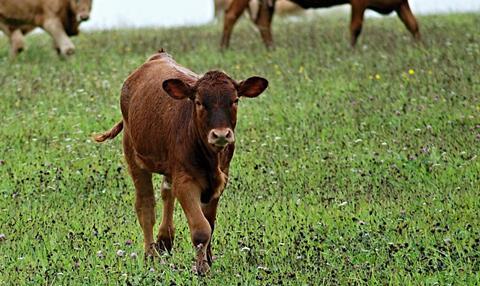According to Hybu Cig Cymru-Meat Promotion Wales (HCC), the Welsh beef sector may see long-term market stability and positive price growth following new calf registration numbers, which matched other statistics showing supply tightening from the end of 2024 forward.

The September edition of HCC's Market Bulletin alerted subscribers to evidence that, after a "more plentiful 2023", supply may contract if there is no recovery in registration numbers during the second half of 2023.
HCC reported that from January to July this year, total calf birth registrations in Wales fell by 2%, compared to the same period a year ago. It stems from recent data from the British Cattle Movement Service (BCMS), who registered almost 223,100 calves during the period – more than 5,000 calves less year-on-year.
“Trends across Britain reveal total calf registrations are down 2% to 1.5 million head,” explained Glesni Phillips, HCC’s market intelligence, analysis and business insight executive. “In Wales, we are seeing the least number of calf registrations recorded during the first half of the year since 2019.
"In late 2024 supply will reduce, and that should give the sector some optimism moving forward."
Glesni Phillips, HCC market intelligence, analysis and business insight executive.
“It’s a different trend to what we have seen to date in 2023; BCMS figures relating to the numbers of prime cattle on the ground currently suggest supply will remain plentiful during the remainder of this year - but it might well be tight from the end of next year,” said Phillips. “All in all, it would suggest that in late 2024 supply will reduce, and that should give the sector some optimism moving forward.”
Phillips said dairy female calves registered in the first six months of this year in Wales decreased by 6% compared to the same period a year ago, but dairy male numbers were down by a significant 20%. She said: “Dairy male calf numbers have been in decline for some time, probably influenced by a combination of increased uptake of sexed semen on farm and new dairy calf management requirements.
"In 2021, males accounted for 37% of dairy registrations; now it’s just 30%,” said Phillips. “Moving forward, this will likely impact on the availability of animals for beef production within the supply chain.”
This story was originally published on a previous version of the Meat Management website and so there may be some missing images and formatting issues.















